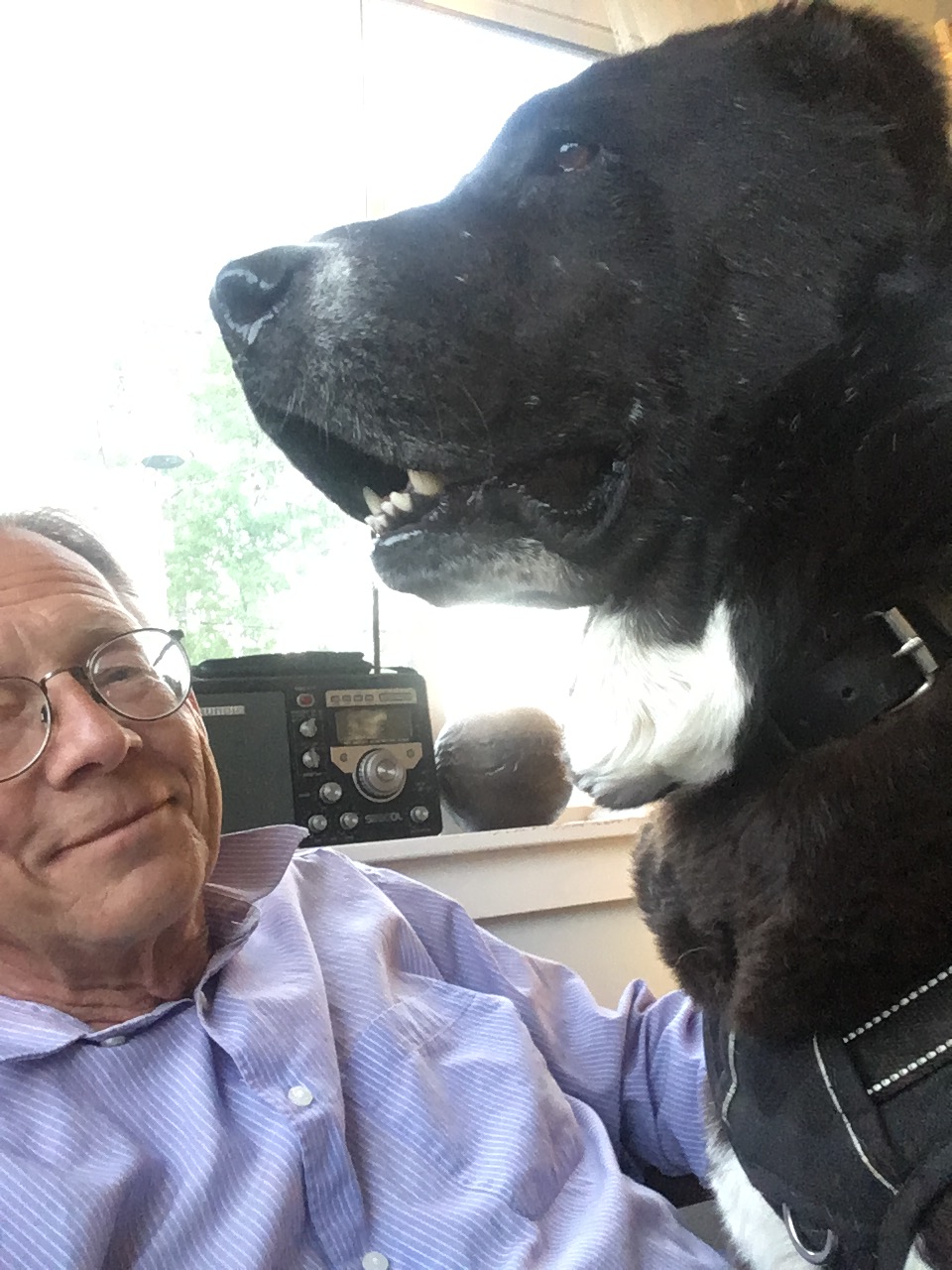Sometimes, after crafting an important or complex plan of care with a patient, I say: “Let me type all this into the computer so that, in case I run into that big bull moose up on Vaillancourt Hill on my way home tonight, the next doctor who sees you will know what we were thinking today.”
Patients sometimes squirm or laugh nervously at that, but then they usually indicate understanding and appreciation of what I am doing.
I am a physician who started out in the era of handwritten office notes. I often reminisce about the pediatricians who simply charted “LOM Amox” when a child had come in with a left-sided ear infection and received amoxicillin. From a medical point of view, there’s usually still little more to say, but now we don’t document for ourselves or other doctors anymore. These days we have to document for the insurance companies, the government, the legal system and for all kinds of lay people. And what we document isn’t just the medical facts of each visit, but also to what degree we did our job as the eyes and the voice of the government.
Treating the sick or counseling the well, we now have our agenda dictated by the government, from what we do when a patient’s body mass index is in the obese range all the way down to the sources of our patient education handouts – if I provide the best written information I have gathered over years of practice, instead of the rudimentary boilerplate materials from my EMR, I fail at “Meaningful Use” (of my EMR)!
I have seen the documentation requirements of what we do to fulfill the government’s public health agenda grow so much that what we think, beyond the patient’s ICD-9 (soon 10) diagnosis code, has become harder and harder to discern in many colleagues’ medical records, possibly also in my own.
Just before our clinic bought an electric medical record system, I walked through a much larger office with their Executive Medical Director. He and one of the clinic doctors explained, “with the EMR, we start with the superbill and work backwards”. I was used to start with the undiagnosed symptom or the presenting known diagnosis and work forward, carefully crafting a plan of action.
I didn’t quite grasp at the time how significant his statement was. Now, years later, I see the depth of this: In the first few years that we used our new system, I and all our doctors in our organization lost our quality certification with NCQA for diabetes and cardiovascular care because our new EMR didn’t track what we did for our patients. It wasn’t enough to do foot exams and to write (type) when patients last saw their eye doctor: Anything we do or even think we might track must appear as an “order” in the superbill, because our EMR is hardly a medical records system at all, but essentially an accounting or bookkeeping program. (We did re-qualify with NCQA last year.)
Referrals, imaging and lab tests are all “ordered” from pick-lists in the “superbill”. If I want to send a patient to a specialist in Connecticut, where my patient will be visiting with her family, I can’t enter the order, even though I have the doctor’s name, address, phone and fax number. I must call the EMR coordinator on call to have the specialist entered in the master list so I can “order” by clicking. Anything just typed in doesn’t exist in a bookkeeping sense.
When I do a foot exam, I also have to “order” it. And later, when I sign off all my incoming test results, there are all the foot exams I did myself, requiring my electronic signature, as if I hadn’t already noted what the findings were. Such ordering and sign-off becomes central in our new “workflows” – a word I never needed to contemplate until I started to understand my new role as a medical line worker, feeding the government-imposed computer.
When eye doctor reports come in from doctors who have been following my patients since long before our EMR, my nurse has to create a “non-billable encounter” for each one, and “order” the eye exam, so she can scan and “attach” the report to the order.
Between rooming patients, she is supposed to be “working her pending orders“, starting at the list of electronic orders I have entered, not organized by patient, but by order type, devoid of any personal connection: First all the X-Rays, then all the lab tests, and so on.
My nurse has a lot less time these days to read my office notes, so when patients call with questions, she isn’t as aware of what’s going on with them as she was before the computer.
And with all this “ordering”, there is simply less time for me, too – not only to think, but also to document what I am thinking. There is only so much you can accomplish in fifteen minutes!
Which brings me back to the A&P, or Assessment and Plan. In the beginning, documentation of those two things was the purpose of the medical record. Clinical notes were just that, clinical, not billing instruments or government compliance documents. So many other things got piled on top of the purely clinical agenda that we have almost lost what we all set out to do as doctors.
No wonder I feel a little sentimental sometimes and wish for a system that serves the clinical process more than today’s EMR.











I can’t say how sad and miserable this makes me. One step wrong, one missing reference number on a referral, and it turns sour. ASCO is calling the IDC-10 referrals, as one of the big threats to future quality cancer care. My ENT went all out and invested in a large office, IDC-10, and the staff, only for ICD-10 to be put on hold by the feds.
You so accurately listed the problems with ICD-9. They are mind boggling. personally, I like to say, “hit by space junk”. We don’t have moose here, but we have rattlesnakes and ‘space junk’.
I don’t mind what is out there in my EHR, but I hate how nosey the gov is. I put my doctors in a hard place, because I’m so non-compliant. I have 2 oncologists that have me on a specific diet and they monitor my weight. I’m in remission for a rare incurable. My weight goes against all gov goals. I’m in a population where we die a whole lot after treatment, failure to thrive-starve to death-malnutrition.
This can be very hard on PCPs and their obesity treatment performance records. I’m 73, I refuse lots of tests. I tell them that I’m 73. I don’t take pain killers, no sleeping pills, I’m limber, I take 2 stomach meds, Armour Thyroid, sinus, and Flonase. As a few intake nurses say, “You must be doing something right.” Only, I’m in for a sprained ankle-I climb ladders-go on roofs., things that an older person that’s doing right can do.
Unfortunately- the ICDs, don’t have a code for doing something right.
Thank you for your posts and opinions.
Now I understand why people say they feel more like a number than a person.
It sounds to me like our healthcare system is already socialized now, except monetarily. Patients still have to pay ever increasing out of pocket costs for increasingly micro-managed treatment by the government.
Its WHO- world health organization- They want to assess the health care in every country. It is part of the UN. Lots of people now say it isn’t- they can’t seem to understand that the UN has many agencies that report to it, and are part of it.
While WHO wants to know about my sex life, how often I fall- once every-4 years, and it’s usually caused by a reaction to a med. I notice those are not entered in ICD-at least very few doctors do so. It lowers their ratings, the ratings of that health care facility, and even the rating of the state. Meanwhile, I’m marked non-compliant and aggressive.
Last summer I finally gave in to taking BP med. I was feeling Ok, and I started to climb on a kitchen chair-fainted. Still have a scar from that. I reported it. It’s not on my record at all, because it makes everyone look bad. I asked them if they were trying to kill me off with a head injury. I fell forward, and sliced my leg on a sharp- not rounded chair seat.
WHO did a fine job with Ebola didn’t it? meanwhile our “Country Doc” wasn’t certified because he had trouble with an A** backward software program. you know what the Serbs, Bosinans, etc calle the UN– Smurfs- pretty blue hats like the cereal Smurfs, good for nothing-but look good. I keep telling everyone, I’m not a population, I’m not a number, I’m not data, not a demographic– I am an old woman- still a human